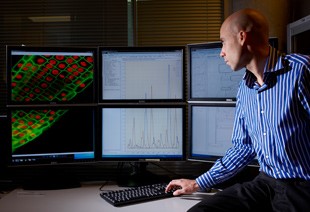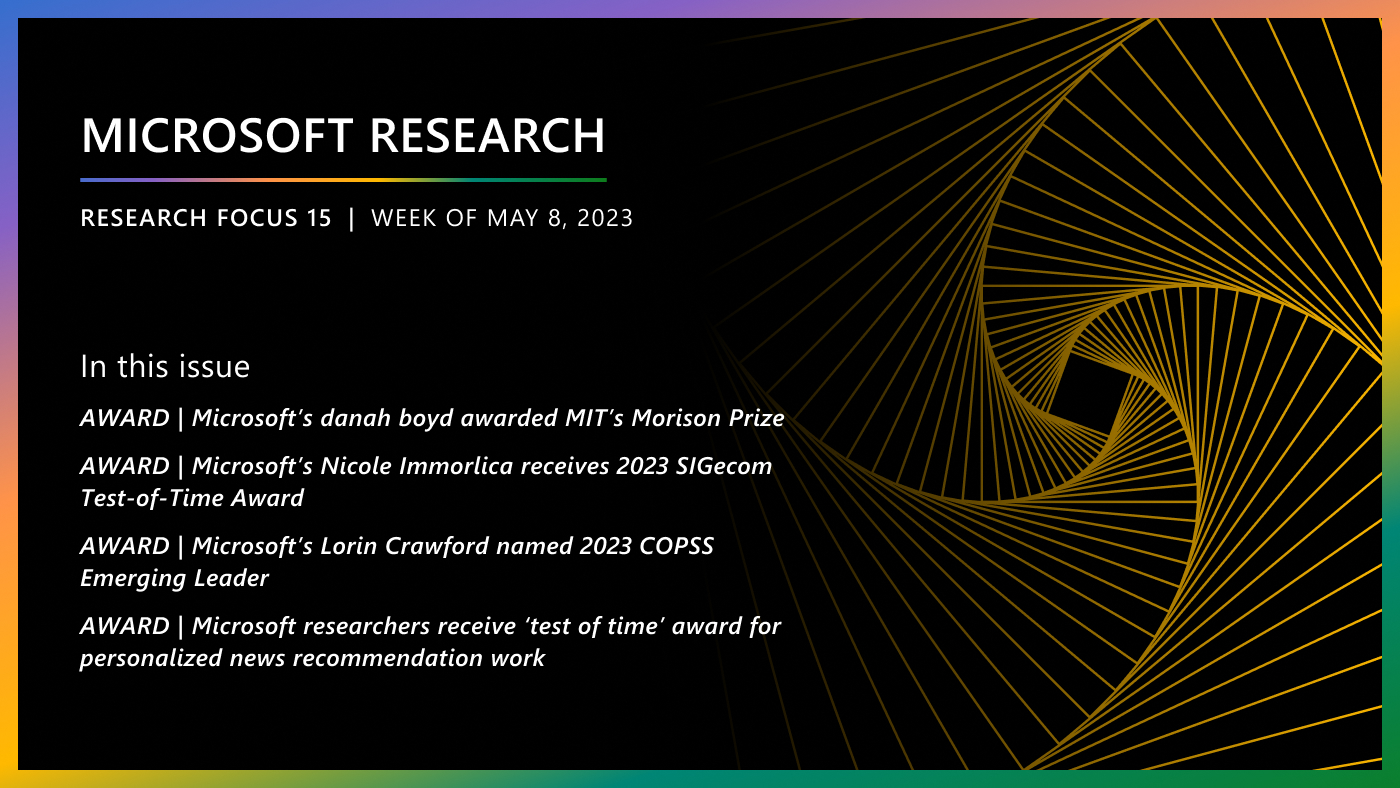By Douglas Gantenbein, Senior Writer, Microsoft News Center
Pioneering research into programming biology has earned a Microsoft Research scientist a prestigious TR35 award, presented by Technology Review.
Andrew Phillips, a 34-year-old scientist who leads the Biological Computation group at Microsoft Research Cambridge, received the award, given each year by Technology Review to recognize the world’s top innovators under the age of 35. The awards span energy, medicine, computing, communications, nanotechnology, and other fields.

Spotlight: AI-POWERED EXPERIENCE
‘It’s possible that programming biology may one day surpass the world of programming silicon,’ says Andrew Phillips, whose work has earned him recognition as one of the world’s top young innovators from Technology Review.
Phillips was among more than 300 nominations reviewed by a panel that consisted of expert judges and the editorial staff of Technology Review. Xiao Li, until recently with Microsoft Research Redmond, also was given a TR35 award, for her work with natural language interfaces.
Phillips’ work aims to uncover fundamental principles of biological computation—what cells can compute, and how and why they do so. Understanding biological information processing could take us one step closer to understanding life itself.
One of the central aspects of the Biological Computation effort is research into the design and implementation of DNA-based computational devices that can perform computation in living systems: programming life.
“We want to actually create designed DNA machines with designed instructions and functions and operate them in living cells and systems,” Phillips says. “In the same way you write programs for a computer, hit ‘compile,’ and get binary code as a sequence of numbers 0 and 1, we want to be able to write programs for a living cell, hit ‘compile,’ and get genetic code as a sequence of letters G, A, T, and C. The cell then reads the code and produces the proteins that enable it to change its behavior.”
The work that earned Phillips a TR35 award is moving down two paths. On one, he is working on the principle of what is called DNA-strand displacement.
“It turns out that we can design, ‘compile,’ and implement DNA to do computations in a cell,” Phillips says. “And since the output of the computation is DNA, it can, in theory, interact with a cell and cause it to do things like generate new proteins and new functions.”
Phillips has led the development of a DNA strand-displacement language, called DSD, that enables the specification, design, simulation, and compilation of DNA “circuits” or devices, which can then compile to actual DNA.
In 2009, in the Journal of the Royal Society Interface, Phillips and Microsoft colleague Luca Cardelli reported that they could use their research to design simple logic gates and catalytic circuits, among other functions. Phillips’ DSD programming environment recently was used by colleagues Lulu Qian and Erik Winfree at the California Institute of Technology to build complex circuits using DNA, as reported in Nature and Science.
In another approach, Phillips is investigating the tactic of viewing DNA as digital code—literally, thinking of DNA as the software of a cell.
Recent experiments have shown that DNA can be used to completely reprogram a cell. Just over a year ago, for instance, noted scientist Craig Venter—who led one of the first projects to sequence the human genome—extracted the genetic code from one bacterium, synthesized it, and injected it into a different species of bacteria. That second bacterium then completely changed its behavior to match that of the first bacterium.
The Next Step: Designing the Program
Although that represented impressive work, it was only the first stage in being able to program cells, by copying an existing program from one cell and inserting it into another. The next challenge is to be able to design the program ourselves. To help achieve this, Phillips is leading the development of another programming language, code-named GEC, for designing genetic devices that could be used to program cells to perform specific functions, rather than blindly change behavior based on new code.
“We want to specify the behavior,” he says, “and work out the DNA instructions that are needed to implement this behavior in cells.”
In one example, Phillips and colleagues start with a program that enables cells to detect the presence of a molecular signal and to create green, fluorescent protein in response. They then write a program to make a colony of cells in a petri dish that respond to the signal as it travels across the cell. Using this approach, they have designed simple cell programs that, when simulated, produce patterns of colored regions known as a Turing pattern. The software then automatically generates the set of DNA sequences needed to produce the pattern.
Phillips’ background is in theoretical computer science, with a focus on programming-language development. In 2005, shortly after earning his Ph.D. at Imperial College London, he joined Microsoft Research Cambridge as a postdoc. He got a chance to work jointly with Cardelli, one of the world’s leading experts in programming languages, and Stephen Emmott, who was then establishing Microsoft’s Computational Science research and who was looking for bright young scientists interested in pursuing his ideas on Biological Computation.
“Microsoft Research is a great environment,” Phillips says. “I can work with experts in programming languages, other biologists, neuroscientists, and even ecologists, with the opportunity to collaborate with a diverse range of people in different fields. We have the scope to research and develop what might become the key technologies of the next decade or the decade after that. It’s possible that programming biology may one day surpass the world of programming silicon.”
Emmott nominated Phillips for the TR35 award and has high praise for Phillips’ work.
“Andrew’s research into programming biology and DNA as computation is genuinely revolutionary and is recognized as having the potential to underpin a transformation of biology and medicine,” Emmott says. “He has pioneered a fundamentally new domain of computing and software: computing in living systems and ‘living software.’ And on top of being an outstanding, gifted young scientist, Andrew is an absolutely wonderful scientific colleague.”
Phillips and other TR35 winners will be featured in the September/October issue of Technology Review.





